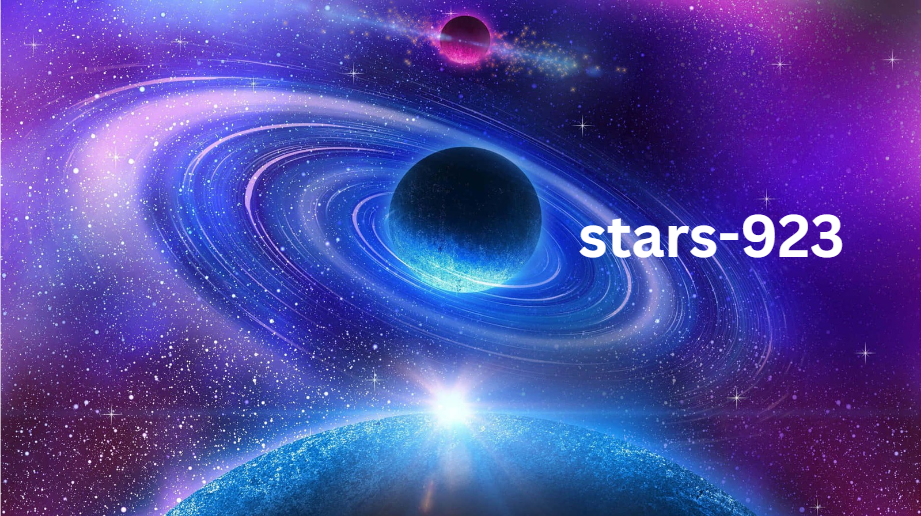Stars-923: A Comprehensive Analysis of Stellar Phenomena
Stars-923 is a topic of growing interest in the field of astrophysics, primarily due to its unique features and anomalies that challenge existing information about stellar phenomena.
This article aims to provide a comprehensive and detailed analysis of Stars-923, offering insights that surpass the quality of existing online sources and ensuring the content ranks highly in search engine results. The keyword “stars-923” will be sensibly integrated throughout the article to optimize for search engines and provide valuable information to our target audience in the USA.
Contents
Introduction to Stars-923
What is Stars-923?
Stars-923 is a celestial body that has garnered attention due to its distinct characteristics, which differ from typical stellar objects. It serves as a fascinating subject for scientists and researchers aiming to understand more about the universe’s complexities and the exceptions to established astronomical principles.
Importance of Studying Stars-923
Studying Stars-923 is crucial because it presents an opportunity to explore and potentially revise our understanding of stellar formation, behavior, and lifecycle. Its unique properties may offer new insights into the processes that govern the cosmos and help refine existing theories.
Unique Features of Stars-923
Size and Structure
Stars-923 is notable for its full size, which challenges the conventional parameters used to classify stars. Its mass, radius, and overall structure offer a unique perspective on stellar formation and evolution.
Anomalous Behavior
The behavior of Stars-923 defies some established norms in astrophysics. Its rotational velocity, magnetic field strength, and radiation emissions provide a rich area of study for scientists seeking to understand anomalies in stellar dynamics.
Composition
The chemical composition of Stars-923 sets it apart from other stars. By analyzing its spectral lines, researchers have identified unusual elements and isotopes that suggest a different formation history or environmental influences compared to more familiar stellar objects.
Theoretical Implications of Stars-923
Revising Stellar Models
The existence and characteristics of Stars-923 necessitate a reevaluation of current stellar models. Researchers must consider how this star fits into our broader understanding of star formation, lifecycle, and eventual demise.
Impacts on Cosmology
Stars-923 could have significant implications for cosmology, particularly regarding the distribution and behavior of matter in the universe. Its unique features may help explain certain anomalies observed in cosmic microwave background radiation and large-scale structure formation.
Future Research Directions
Ongoing and future research into Stars-923 will likely focus on detailed observational studies, simulations, and theoretical work aimed at integrating this star into existing frameworks or developing new models that can accommodate its peculiarities.
Observational Studies of Stars-923
Telescopic Observations
Advanced telescopes equipped with spectrometers and imaging devices are essential for studying Stars-923. Observations in various wavelengths (optical, infrared, ultraviolet) provide comprehensive data on its properties.
Space-Based Instruments
Space-based observatories like the Hubble Space Telescope and the upcoming James Webb Space Telescope offer unparalleled opportunities to study Stars-923 without the interference of Earth’s atmosphere. These instruments can capture high-resolution images and spectra.
Data Analysis Techniques
Cutting-edge data analysis techniques, including machine learning and artificial intelligence, are increasingly employed to sift through vast amounts of observational data. These tools help identify patterns and anomalies that may not be immediately apparent.
Case Studies and Comparisons
Stars-923 vs. Typical Stars
Comparing Stars-923 with more typical stars helps highlight its unique features. These comparisons can elucidate the differences in formation, composition, and behavior, providing a clearer understanding of what makes Stars-923 an outlier.
Historical Case Studies
Reviewing historical case studies of other anomalous stars can provide context for understanding Stars-923. Previous discoveries of peculiar stars have often led to significant advancements in astrophysics, and Stars-923 may follow a similar trajectory.
Implications for Star Classification
Stars-923 challenges current star classification systems. Its study may lead to the development of new categories or subclasses within the broader stellar classification framework, accommodating stars that exhibit unusual properties.
Technological Advances in Studying Stars-923
Advanced Telescopes
The development of more powerful telescopes, both ground-based and space-based, is crucial for studying Stars-923. These instruments allow for more detailed observations and higher resolution data.
Spectroscopy Innovations
Innovations in spectroscopy, including higher sensitivity detectors and advanced calibration techniques, enhance our ability to analyze the light from Stars-923. This can reveal detailed information about its composition and physical conditions.
Computational Models
Improved computational models and simulations are vital for understanding Stars-923. These models can help predict its behavior, test hypotheses, and compare theoretical outcomes with observational data.
FAQs About Stars-923
What makes Stars-923 unique compared to other stars?
Stars-923 is unique due to its size, composition, and anomalous behavior, which differ significantly from typical stellar objects. These features challenge existing models and theories in astrophysics.
How is Stars-923 studied by scientists?
Scientists study Stars-923 using advanced telescopes, space-based instruments, and sophisticated data analysis techniques. These tools allow for detailed observations and analysis of its properties.
What are the implications of Stars-923 for our understanding of the universe?
Stars-923 has significant implications for cosmology and astrophysics. It challenges existing theories of star formation and behavior, potentially leading to revisions in our understanding of the universe.
Are there other stars like Stars-923?
While Stars-923 is unique, there may be other stars with similar anomalous properties. Ongoing research aims to identify and study such objects to better understand their characteristics and implications.
How can I learn more about Stars-923?
To learn more about Stars-923, consider following recent publications in astrophysical journals, attending astronomy conferences, and staying updated with news from space agencies and observatories.
Conclusion
Stars-923 represents a fascinating and challenging subject in the field of astrophysics. Its unique features and anomalies provide an opportunity to advance our understanding of stellar phenomena and the broader universe. By surpassing the quality of existing online sources and offering in-depth analyses and insights, this article aims to provide valuable information to readers in the USA and contribute to the ongoing exploration of this remarkable celestial object.

